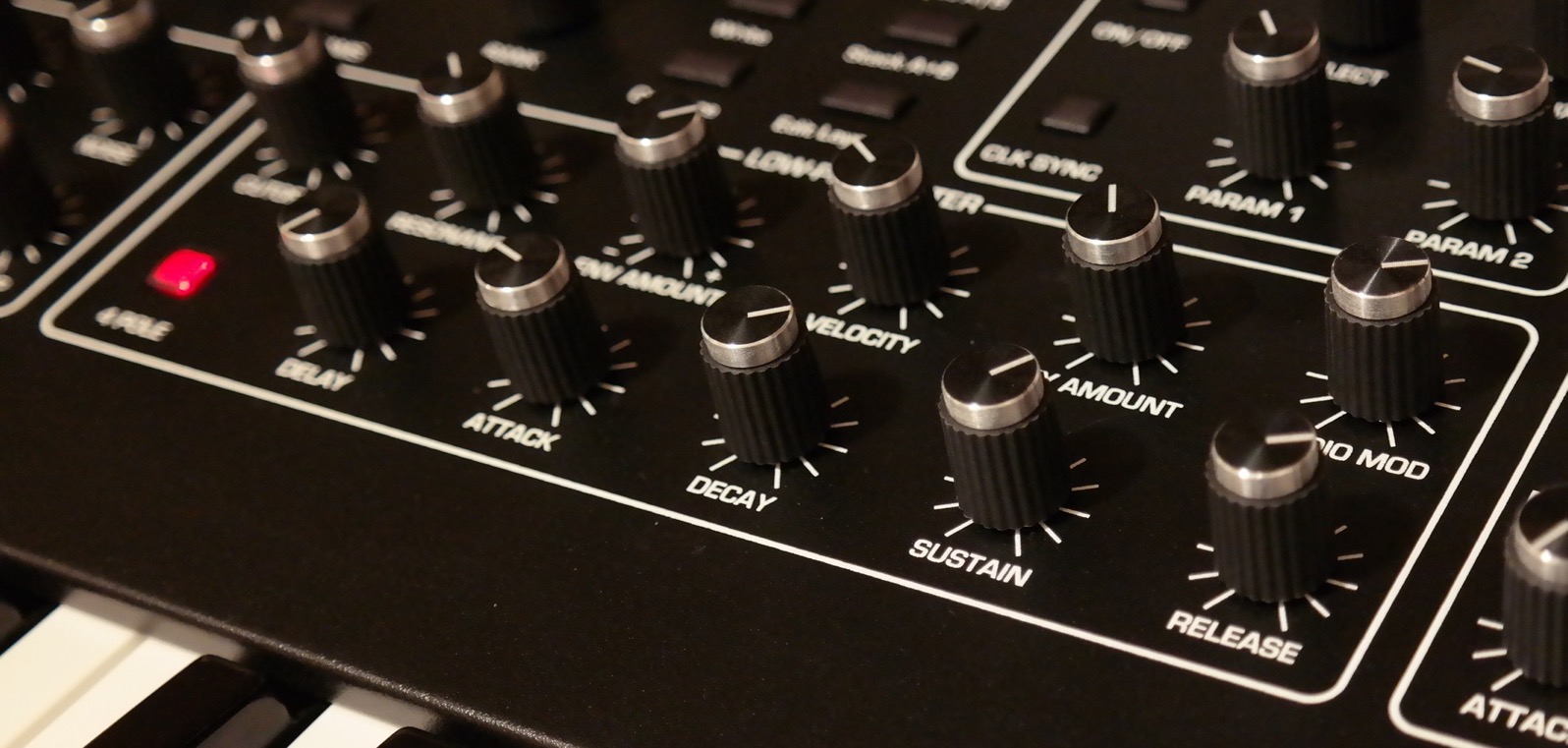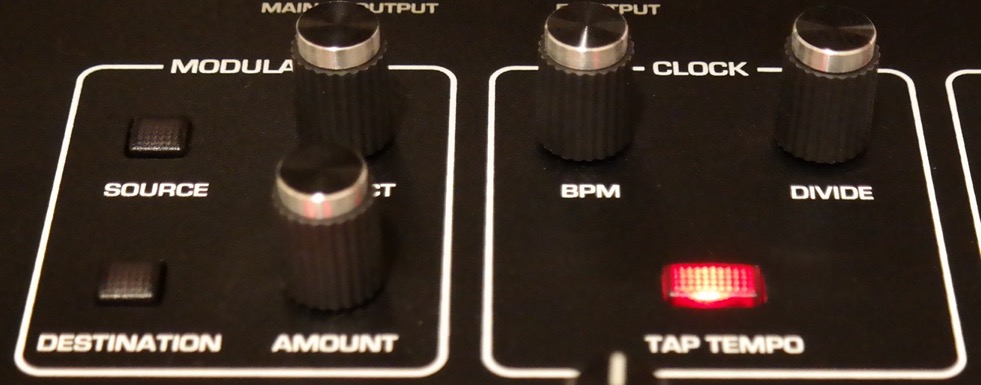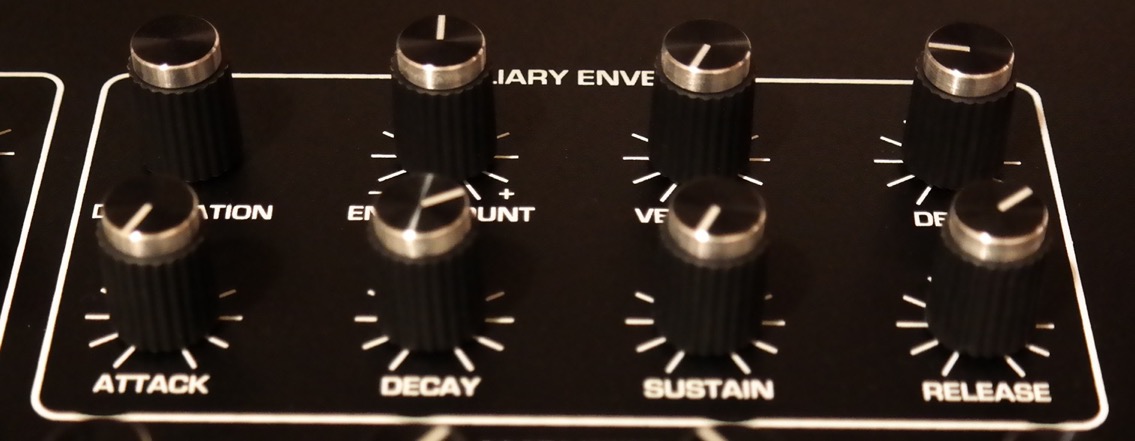
The history of Sequential’s (or temporarily Dave Smith Instruments’) legendary Prophet synthesizers started over 4 decades ago. For details, head over to Youtube.
The REV2 features a fully analogue signal path, though its oscillators are not voltage, but digitally controlled (DCOs instead of VCOs). Compared to its predecessor 08, it is being said that the keybed was improved (Fatar TP/9S). The power supply is now internal instead of a wall wart. USB-MIDI was added as well as eight banks of preset memory (instead of two). The REV2 can load presets from the 08, though they might not sound absolutely identical due to subtle changes in its design. All waveforms now obey to wave shaping, and a sub oscillator was added as well as a digital effects unit. The modulation matrix now provides eight (instead of four) entries. The REV2 actually appears as a polished 08 and is, despite its complexity, very accessible due to its great user interface.
The machine is available in eight and sixteen voice flavours. Eight voice users can purchase an extension board, which is not available at a bargain, though. 16 voices are recommendable, since sounds with notable release times are one of the strenghts of the REV2. During startup, the Rev2 displays the amount of voices available. Since the board can be easily removed, this message is of special interest for s/h buyers.
The timbre is coined by Dough Curtis‘ filter design and reminiscent of the typical ’80th sound of other synths (like Waldorf‘s Microwave I) and several music productions of that time. The factory presets provide a good overview of its capabilities. It is being said, though, that they don’t really unveil the instrument’s potential. Several third party soundsets are available, e.g. the Pad Collection or the 80’s soundset by Roberto Galli, Synthwave or Vintage Classic by Luke Neptune, the Voice Component Modeled Patch Bank by Jason Cooper, or Prophet Classics respectively Exploring Prophet by AnalogAudio1, just to name a few.
Unlike the Deepmind, the REV2 does not depend on its digital FX engine. For home or stage use, it’s a welcome addition anyway. Studio users may use an already present external processor.
The 1024 presets on the unit cannot be categorized or searched by certain criteria, and unlike the Korg logue synthesizers, no official sound librarian is provided. Recently, Knobkraft Orm, an open source tool, appeared, which lets the user load presets in SysEx format and easily browse and audition its content.

One of the strenghts of the machine is its massive modulation capability. It provides four LFOs with five waveforms each, which can be routed directly to several destinations. The top right hand section provides a third envelope generator, so modulating some oscillators pitch does not limit the automation of the filter’s cutoff contour. The top left hand section provides a modulation matrix with eight general purpose entries and five additional entries. The latter ones grant direct access to controllers like the modulation wheel, aftertouch, breath controller, foot controller or velocity. Evolving pads and living strings are one of its natural domains.

The oscillator section provides sync, but no ring– or cross-modulation. However, the top right hand corner of the filter section provides an interesting audio mod pot, a feature seldom to find.
There’s a lot more to be said, since the Prophet Rev2 is quite deep. Just search the web for more details about this outstanding synth.
